
Purestock/Purestock/Getty Images
The Kit Kat candy bar, a product of the Hershey Company, is a light crispy cookie wafer, covered in chocolate. Each bar has four distinct wafers that can be easily broken and shared. As with most Hershey products, Kit Kat bars come in several seasonal varieties. In comparison, the nutritional value of a Kit Kat bar is essentially equal to a traditional Hershey’s chocolate bar.
Serving Size and Varieties
One standard Kit Kat bar is 42 grams, the Kit Kat King Size bar is 85 grams, a Kit Kat Snack bar is 14 grams and a Mini bar is 8.4 grams. Kit Kat varieties include Milk Chocolate, Dark Chocolate, White and Milk Chocolate Extra Crispy. Seasonal Kit Kat’s include Valentine’s Day Minis, Kit Kat Holiday Minis, Easter Minis and Kit Kat Halloween bars.
Nutrition Facts – Milk Chocolate
One standard Kit Kat bar has 210 calories, 11 g of fat, 7 grams of saturated fat, 5 mg of cholesterol, 30 mg of sodium, 28 g of carbohydrates, 1 g of fiber, 22 g of sugars and 3 g of protein. Each bar provides 2 percent daily value of iron and 6 percent daily value of calcium. According to the Dietary Guidelines for Americans 2005, people who consume foods high in added sugars tend to consume lower amounts of micronutrients. A milk chocolate Kit Kat bar has 22 g of added sugars, which is substantial for a single, 42 g food item.
Nutrition Facts - White
One standard Kit Kat White Wafers n’ Crème bar has 220 calories, 12 g of fat, 8 g of saturated fat, 5 mg of cholesterol, 45 mg of sodium, 26 g of carbohydrates, 18 g of sugars and 3 g of protein. This bar provides 8 percent daily value of calcium. According to the Dietary Guidelines for Americans 2005, you should limit saturated and trans fats in your diet. The White Kit Kat bar has 12 g of fat, and eight of those grams are saturated fat.
Comparison
One 43 gram Hershey’s Milk Chocolate bar has 210 calories, 13 g of fat, of which 8 grams are saturated, 10 mg of cholesterol, 35 mg of sodium, 25 g of carbohydrates, 1 g of dietary fiber, 24 g of sugars and 3 g of protein. One chocolate bar provides 2 percent daily value of iron and 8 percent daily value of calcium. In comparison, a Hershey’s bar essentially has 2 to 4 grams more sugar and twice the cholesterol. According to the Dietary Guidelines for Americans 2005, it would be wise to find a snack that has a much lower fat content, and preferable one with polyunsaturated or monounsaturated fats.
Related Articles

Calories in a Mini Mars and a Milky Way ...

How Many Calories Do Popular Chocolates ...

Quaker Oats Instant Grits: Nutritional ...
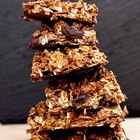
Nutritional Facts for Fiber One Bars
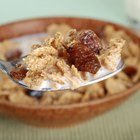
Calories in a Bowl of Raisin Bran Cereal
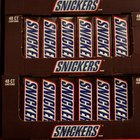
Snickers Bar Ingredients

Calories in Banana Pancakes
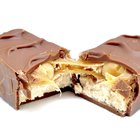
How Many Calories Are in a Fun Size ...

How Much Whole Grain Should You Eat a ...

How Many Calories Are in Peanut M&Ms?

Nutritional Facts on a King Size ...

Ingredients of Candy Bars

The Calories in a McDonald's Hot Fudge ...
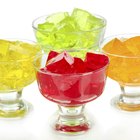
Fat-Free and Sugar-Free Jell-O Pudding ...

How Many Calories Are in One Cheese ...

Kraft Singles Cheese Nutrition Facts

How to Replace Ingredients to Make ...

How Many Calories Are in a Slice of ...

The Ingredients in Clif Bars

The Nutritional Value of Tostitos White ...
References
Writer Bio
Based in Atlanta, Valerie Liles has been writing about landscape and garden design since 1980. As a registered respiratory therapist, she also has experience in family health, nutrition and pediatric and adult asthma managment. Liles holds a Bachelor of Arts in journalism from Colorado State University and a Master of Science in technical communication from the University of Colorado.
Photo Credits
Purestock/Purestock/Getty Images